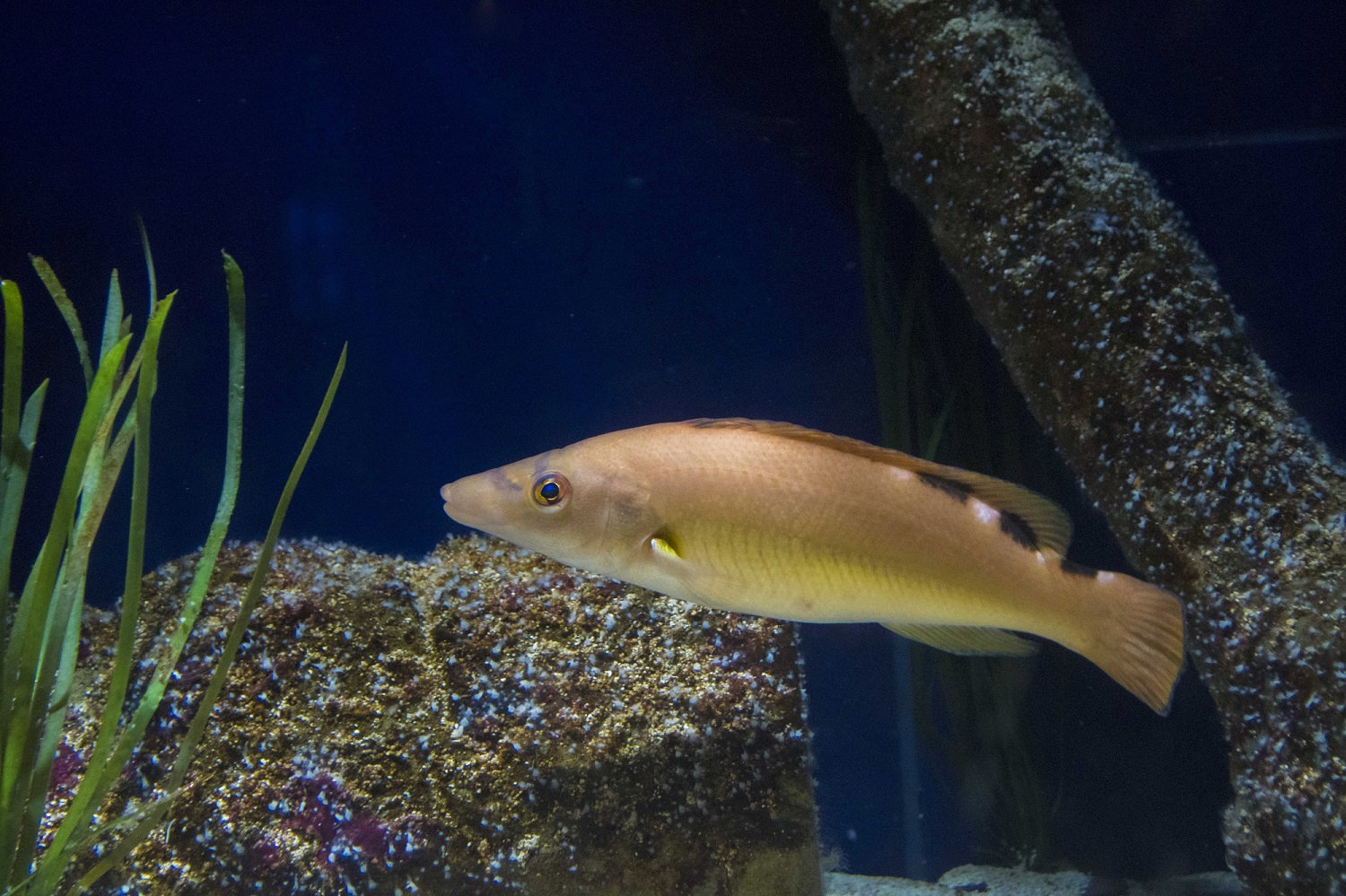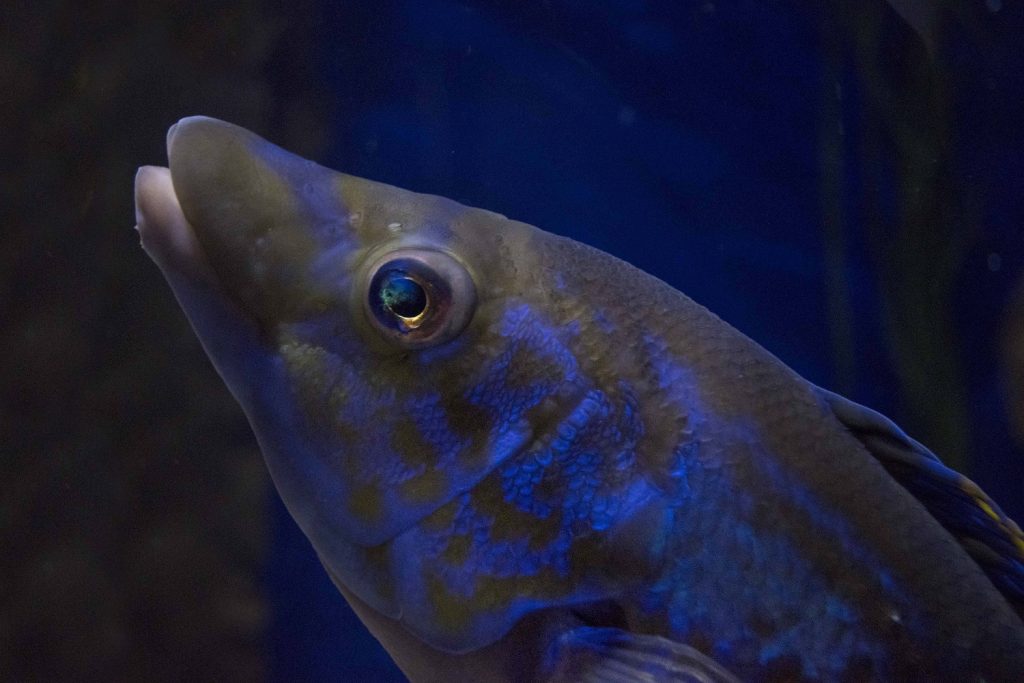
About the Cuckoo Wrasse
Cuckoo Wrasse (Labrus mixtus) is a bright-looking fish often found in the colder waters around our coastlines. Their striking colourings and markings mean they’re easy to spot out in the wild, although we’re lucky enough to have our own at Bristol Aquarium.
Find out more about these wonderful fish below.
How to identify a Cuckoo Wrasse
Cuckoo Wrasse are often large and slender at around 30-35cm. But their most identifiable feature is their colourful markings, which vary depending on the sex of the fish. Females are an orange-pink colour with black and white spots across the back, while males have electric blues stripes on their heads and backs, coupled with orange fins and bodies.
Cuckoo Wrasse Life-Cycle
Cuckoo Wrasse spawning season spans from May to July and involves quite complex nest-building behaviour from the male. They create their nests either by choosing a dip in a gravel area of the water or by stacking seaweed. Males will also put on an elaborate display to help them attract the female cuckoo wrasse to the nest they’ve built.
Once the male has successfully attracted the female, she will then lay sticky eggs in the nest ready for the male to fertilise. The male will continuously guard the nest to protect it from predators until the eggs start to hatch.
Once hatched, the larvae feed on zooplankton before going through the process of metamorphosis (a physical change), Growth is pretty quick for the first four years of their life, and males tend to develop faster than females.
As protogynous hermaphrodites, cuckoo wrasse fish all start life as females. Only some will change to males later in life as and when needed. Transitioning from female to male takes somewhere around seven months, depending on the size and proportions of males and females already in the local population.
Cuckoo Wrasse can live for around 17 years and often inhabit the same area for most of their lives because they’re a non-migratory species.
Cuckoo Wrasse Habitat
Cuckoo Wrasse fish tend to live over rocks and hard ground, in the algal zone, and in shallow waters of the ocean.
They’re mostly found in the rocky areas of Britain and Ireland’s coastal regions.
Where to see Cuckoo Wrasse at Bristol Aquarium
Our Cuckoo Wrasse can be found in our Ocean Floor exhibit. See if you can spot them amongst the Sea Bass, Starfish and several shark species also in there!
Fun Facts: Cuckoo Wrasse
Ready for some fun facts about one of the most colourful fish swimming around in oceans so close to home?
Here are six of our top facts and figures:
- Cuckoo Wrasse are protogynous hermaphrodites, meaning they can switch from female to male when needed.
- The lips of their large mouths usually have 7-9 folds. Cuckoo Wrasse also have a single row of sharp, canine-like teeth.
- The scales are smaller than the diameter of the pupils of their eyes.
- Their diet often consists of barnacles, other crustaceans, and molluscs.
- Females are thought to lay around 1,000 eggs in nests created by the males.
- The name cuckoo wrasse was coined by Cornish fishermen who compared the blue markings of males with bluebell flowers (bleujenn an gog), which translates to “Cuckoo flower” in Cornish.
Plan your own visit to discover more of the wonderful animals we have at Bristol Aquarium!
Type
Fish
What do they eat?
Crustaceans, fish and molluscs
Size
40cm
Water Type
Cold saltwater
Where are we?
North Atlantic, UK coasts
See Us At
Ocean Floor
